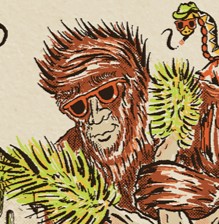So I'm taking the last of my undergrad history courses right now, and one of the books that my professor assigned us is Adam Hochschild's Bury the Chains. We're six chapters in, and so far, Hochschild has centered British abolitionists (primarily Thomas Clarkson) in his accounting of the outlawing of the slave trade in England (I phrase it that way because we all, I assume, know that slavery itself didn't go anywhere after 1833).
Now, I might not be the best read Marxist, but I know enough to be skeptical of any claims of significant historical events being driven by the energy and moral force of "great" individuals rather than the ebb and flow of material reality, a claim Hochschild is definitely making here. He even quotes Emerson in saying "An institution is the lengthened shadow of one man."
Well! I couldn't let that nonsense go unargued, and since lambasting my professor would do no good, I'm here to ask if anybody happens to know the actual reasons the slave trade was outlawed, beyond vagaries about the industrial revolution and wage slavery. Gimme the real nuts and bolts.


It's an interesting read. There's a couple of claims I've wanted to look more into like that there was legislation discussed in British parliament towards abolition specifically to snub the Americas, and that early freedom of religion was in response to Bacon's rebellion, iirc. But overall, the amount of info on rebellions and uprisings was fascinating. But also overwhelming.😅 It's one of those books that could benefit from like an interactive map or something.